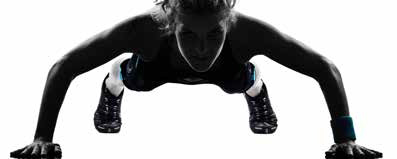The business world finally has a benchmark they can apply to see how present and future fit they are on sustainability parameters.
The ‘Future-Fit Business Benchmark,’ is free, opensource resource defines science-based, aspirational, sustainability goals for a company that desires to be fit for the future on a scarcer, more crowded, and hotter planet.
What it is?
A sustainable future-fit business is defined as a company that creates net positive environmental, social, and economic value throughout its value chain. If it were to operate forever, it would not only do no harm to society and nature, it would do well by doing some net good. The Future-Fit Business Benchmark defines the necessary and sufficient level of performance on 28 environmental and social goals for a future-fit company.
Why was it created?
We are uneasy that the pace of progress is not fast enough to get us to where best-available science says we need to be for flourishing human societies and thriving economies on our finite planet. In order to blow the smoke away from the sustainability goal line, we need to answer two questions:
1. How would we recognize a truly sustainable, fit-forthe- future business if we saw one?
2. How much is enough?
We believe that when businesses see the gap between their current performance and the necessary future-fit level of environmental and social performance, they will abandon their incremental efforts and embrace innovative breakthrough efforts. Attaining the benchmark level of performance is not a sacrifice; we identify benefits to the company if they attain each goal. Some companies may find that they need to redesign their business model to reach the benchmark and capture the benefits.
Who created it?
The project is co-led by Chad Park (TNS Canada) and Geoff Kendall (3DIF). Pong Leung (Travesia Partners), Antony Upward (Edward James Consulting), Martin Rich (3DIF), and I (Sustainability Advantage) are on the core team with Chad and Geoff. Saralyn Hodgkin (TNS Canada) is the project manager. Plus, over a hundred experts have helped us shape the benchmark over the last couple of years.
Who the benchmark is for?
There are five intended user groups.
• Companies, who can adopt the benchmark goals as their aspirational goals. Companies which already have similar goals are referenced in the document.
• Investors, who need to assess which companies are best positioned to mitigate the risks and capture the opportunities created by global sustainability megaforces.
• Raters, who can integrate the benchmark goals into their scoring methodologies and standards.
• Consultants and sustainability advisors, whether for-profit or not-for-profit, who can integrate the benchmark goals into their methodologies and tools.
• Business schools, who can use the benchmark as a focal point for students and faculty to discuss and debate how business activities can help – or hinder – attempts to address today’s biggest societal and environmental issues as they future-proof themselves
• Policy makers, who can use the benchmark as a north star as they prioritize changes to business regulations and incentives with a view to delivering more positive outcomes.










